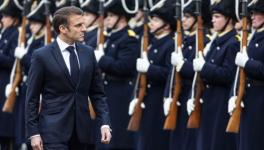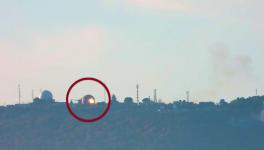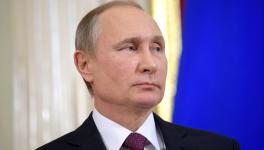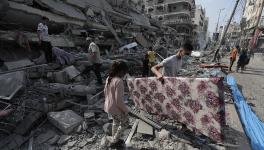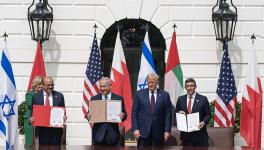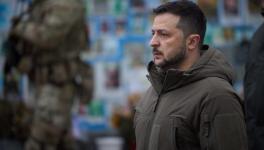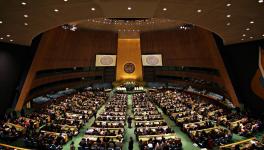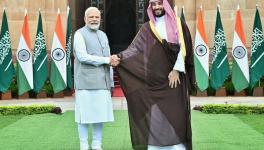Kobane Falling to IS While Turkey Watches
Kobane, the town where Kurdish fighters have held out for nearly 4 weeks, is now on the verge of falling to the IS. The IS fighters have heavy artillery, tanks and armoured vehicles compared to the lightly armed YPG Kurdish fighters. While the new Alliance of the (un)Willing who are supposed to be fighting the IS, have carried out a few airstrikes against the IS, they have been largelyineffective. The Turkish Army is camped on the other side of the border and have offered no support to the Kurdish fighters. For them, having IS take out YPG is not an unhappy outcome, as YPG's parent party PYD, is a close ally of PKK, the Kurdish formation in Turkey battling for Kurdish rights.
The battle for Kobane or Ayn-al-Arab, as it is known in Arabic, marks a crucial moment in the history of the region. It shows that while Turkey, the Wahabi/retrogressive monarchies of Saudi Arabia and the Gulf are willing to join hands with the US in a shaky coalition, all of them still consider Syria and Iran to be their true, longterm enemy. For them, the IS needs to be cut down to size if they venture beyond targets that have been designated for them – Syria, Hezbollah and Iran. The Kurds can be co-opted into the coalition if they are willing to fight against Bashr al Assad government. If they do not, then they would be abandoned to the IS, with only token gestures of support. Already, more than 160,000 refugees have crossed over to Turkey, with more likely to follow.
The PKK, whose chief Ocalan is in jail and involved in peace talks with Turkey, has given an ultimatum that if Kobane falls to IS, it will end their peace talks. Kurds have been protesting in Turkey and even other capitals asking for international help for Kobane. Armed fighters from PKK in Turkey have been prevented from joining YPG by Turkish forces. As Kobane is now surrounded from three sides, the only help that can reach its defenders is from the Turkish side. And that help has not been forthcoming, as Turkey watches Kobane fall.
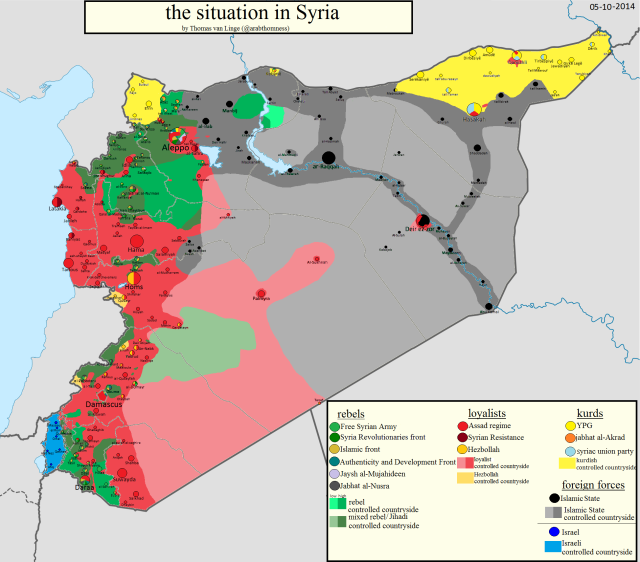
Image Courtesy: vox.com
Reports indicate that YPG and the Turks held talks earlier. The price of Turkish support was that they should join forces with other rebels to topple Assad. This, the YPG refused. For Turkey, Assad still remains as the main enemy, with IS being only a side-show.
While the US has declared its right to bomb anywhere in Syria, till date the Syrian side has been kept informed of US strikes and seems to have passively agreed, while formally arguing for their illegality in international law. The Syrians are fully aware that having tacitly permitted US strikes against the IS on Syrian soil, they have opened themselves to future bombings as well. But with IS having captured a huge cache of arms from the collapsing Iraqi government forces, they have little choice.
Meanwhile, Israel is helping Al Nusra, an official al Qaeda affiliate to capture territory in Syria from government forces near Golan heights and attack Hezbollah in Lebanon. Al Nusra, with Israel's help, now controls a sliver of land from Jordan to Lebanon, facilitating such attacks.
The war against IS is a part of multiple, overlapping wars – Israel against Palestinians and Hezbollah, the US-Turkey-Saudi-Qatari-Gulf war against Assad, the US-Saudi war against Iran, Turkey's war against the Kurds, and the Shia Sunni sectarian wars unleashed by the break-up of Iraq.
Joe Biden has recently confessed what is public – that it is the US allies in the region that have built up the IS. What, of course, he covers up, is the US role in building, first Al Qaeda in Afghanistan to fight the Soviet Union, and then ISIS, to fight against Assad government in Syria. The Iraqi seeds of IS were sown when the US forces, during their “surge”, spent money liberally on these kind of groups to help control the former Baathists. However, ISIS would not have become the threat they did, if not for Syria and the support they received from the NATO countries, and the Turkey-Saudi-Gulf-Qatar axis. It is in Syria that they built up their strength, receiving money, arms and recruits for the global Jihad that the US was helping wage against Assad. A replay of Afghanistan, with entirely predictable consequences.
The sudden collapse of the Iraqi regime and the fall of Mosul has boosted the capability of IS manifold. They now have sophisticated arms, armour, money and have enormous mobility. They have hundreds of Humvees and Toyota trucks carrying machine guns, making them much more mobile than their counterparts, and in a terrain that is particularly helpful for such mobile forces. It is when the IS turned to the Kurdish territory in Iraq, which is de facto autonomous and under the protection of the US for the last two decades, that alarm bells started to ring in the region. It became clear that IS was now a de facto state with contiguous territories, and with its declaration of a Caliphate, had ambitions for the entire region.
Much has been made about how the IS practices a particularly nasty variant of Islam and very different from the moderate, if not warm and fuzzy Islam that supposedly the House of Saud promotes. The reality is that the Wahabi Islam, promoted by Saudi Arabia, also supported by other Gulf states, is the variant of Islam that IS also is proclaiming, except that they claim to practice what they preach, unlike the corrupt monarchies.
For those who believe that all modern forces should unite against such retrogressive forces, miss out one key element in West Asia. Imperialist forces – first Britain and the French, later the US – have all aligned with the most retrogressive forces in the region. Their enemy in the last 100 years have been various forms of secular nationalism, particularly Arab nationalism. This is the basis of their alliance with fundamentalist House of Saud and other monarchies, for whom nationalism with its secular, and democratic underpinning, is also an enemy. It is not surprising that Nasserism, Ba'ath socialism, Kurdish nationalism, Iranian nationalism under Mossadeq, were all seen to be common enemies by the US and the forces of retrogressive Islam. This is why the US regards the House of Saud as its staunch ally in the region, in spite of its beliefs and practice being indistinguishable from the IS, bar the beheadings. Here also, what is fuelling the anger is that British, French and US citizens are being beheaded, not just Arabs and Kurds. In Syria, we have seen all kinds of brutality including cannibalism by the rebel forces, who still continue to be regarded as allies against the Assad government – moderate, albeit organ eating allies – to be helped and armed.
West Asia has now become like a kaleidoscope – with each twist a new scenario unfolds. Who allies with whom and at what instance is very much temporary. For the US and its allies, IS is a force to be tamed while its true enemies are the Iran-Syria-Hezbollah axis; a temporary aberration, to be set right with some air sorties. For the Saudi, Gulf and other monarchies, IS provides strategic depth against Iran and Syria, even if it also poses a threat to their thrones.
West Asian wars are now set to continue for sometime. It is now like a bigger Yemen with all the forces contesting for the region. In Yemen, such a war has finally led to the Houthis seizing power, with the US and Saudis losing Sanaa. It remains to be seen what the long war in greater Arabia will produce. When the war is finally over, it is unlikely that the monarchies will survive: those who sow the wind, also reap the whirlwind.
Disclaimer: The views expressed here are the author's personal views, and do not necessarily represent the views of Newsclick
Get the latest reports & analysis with people's perspective on Protests, movements & deep analytical videos, discussions of the current affairs in your Telegram app. Subscribe to NewsClick's Telegram channel & get Real-Time updates on stories, as they get published on our website.









